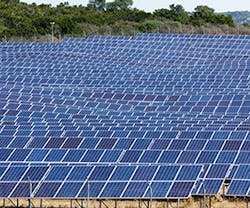Cost of Solar Energy Falls to Record Low
The price of utility scale solar energy has dropped to an all-time low according to a new report, with the average price of a utility power purchase agreement (PPA) coming down to just 5 cents per kWh in 2014, while typical electricity prices were 3-6 cents per kWh. The Utility Scale Solar 2014 study conducted by Lawrence Berkeley National Laboratory defines utility-scale projects as ground-mounted solar installations larger than 5 MW and also notes that the study’s results are dependent on the use of the 30% federal investment tax credit, which is scheduled to drop to 10% in 2016.
In addition to the federal tax credit, the study’s authors also point to several other drivers to explain the dramatic drop in costs, including falling up-front prices for solar projects, with median costs dropping from $6.30/W in 2009 to $3.10/W in 2010. Newer solar technologies that work more efficiently are also noted as a reason for the drop in prices, with projects completed in 2013 operating at an average capacity factor of 29.4%, an increase over the performance of 2012 and 2011 projects, which came in at 26.3% and 24.5% respectively.
The drop in cost and improved efficiencies were the primary drivers behind the drop in PPA costs, which are expected to stay at the low levels especially in the southwest, though other areas are also joining, with the study’s authors citing Arkansas (about 5 cents per kWh) and Alabama (6 cents per kWh) as examples of states that are beginning to deploy solar technology due to the low cost.
Considering solar for your building? Check out these implementation tips to see if the option is right for you.
